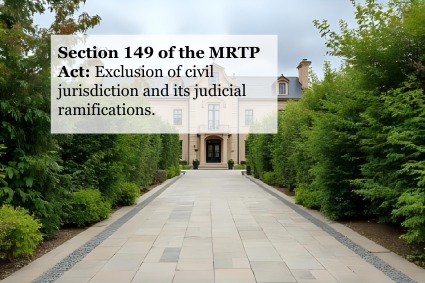Recalibrating Innovation: The Fintech Regulatory Renaissance in India (2025)

Introduction
India’s financial technology (“fintech”) sector is in its most dynamic phase yet, shaped by fast-paced digital transformation, bold regulatory innovation, and a massive, increasingly digital population. Over the past decade, visionary government moves like the Aadhaar biometric framework have been made. The Unified Payments Interface (UPI) has not only vaulted India into the global fintech spotlight but also set the stage for unprecedented growth, with a compound annual growth rate now projected over 30%, with forecasts that put the sector’s value at a staggering USD 550 billion by 2030. With around 950 million internet users as of 2024 and a fintech adoption rate of nearly 87% (well above the global average), India’s market for disruptive financial solutions has never been more fertile.
Yet, as credit ecosystems, wealth tech, Insurtech, embedded finance, and crypto ventures break new ground, the regulatory environment has entered a crucible moment. Recent years have tested the boundaries of existing frameworks with the rise of artificial intelligence in lending, cross-border digital payments, and decentralized assets, forcing regulators, industry, and courts to collectively reinvent the rules of the game. 2025, therefore, is not just another year of momentum but a critical inflection point for India’s fintech future.
Fintech Growth: Investment, Adoption, and Public Infrastructure
Both domestic and international capital powers the upward trajectory of India’s fintech market. Over $30 billion poured into the sector across over 3,000 funding rounds in the last decade, with a peak funding year in 2021. Even in a global downturn, India’s fintech sector drew $3 billion in FDI in 2023 alone, underscoring continued investor faith in a maturing, innovation-rich ecosystem. Payments and digital lending platforms remain hotspots for venture capital, accounting for over half of all funding, while specialized segments like insurtech, wealth tech, blockchain, and neo banking are emerging as new engines for growth.
Much of this momentum is made possible by a robust digital public infrastructure. Aadhaar has revolutionized KYC and onboarding for financial products. UPI, a hallmark of real-time, low-cost digital payments, has democratized access to retail finance. At the same time, ONDC and the Open Credit Enablement Network provide platforms with ready-made interoperability and scalability. NPCI’s orchestration of payment rails such as IMPS, NACH, and RuPay underpins high-volume, secure transactions for established entities and start-ups.
Major Business Models and Regulatory Shifts
Payments Ecosystem:
From payment aggregators to mobile wallets and UPI-based apps, India’s payments space is regulated primarily by the RBI under the Payment and Settlement Systems Act and allied guidelines. A defining 2025 development is the institutionalization of the Payments Regulatory Board, reflecting the need for a modern, nimble oversight body that keeps pace with innovations in online and offline payments. New draft directions extend regulatory scrutiny to offline payment aggregators and merchants at physical points of sale.
Lending and Digital Credit Models:
Lending platforms have flourished, with models ranging from NBFC-fintech collaborations to LSPs, peer-to-peer lending, invoice discounting, and embedded BNPL services. The RBI’s Digital Lending Directions (April 2025) demand transparent pricing, granular borrower consent, strict disclosure, and ecosystem-wide compliance. For the first time, all players, including technology partners, are held equally accountable for KYC, cybersecurity, data management, and grievance redressal. Importantly, all lending data will remain localized in India, and the RBI has the right to algorithmic audits.
Wealth, Investment, and Insurtech:
SEBI’s regulatory net covers an ever-expanding range of digital-first platforms: RIA, stockbrokers, portfolio managers, research analysts, and execution-only platforms. Compliance is driven by minimum capital, registration, disclosure norms, and fee transparency, creating a level playing field for traditional and digital intermediaries. Insurtech, meanwhile, must comply with IRDAI’s granular norms for web aggregators, agents, and brokers, and increasingly operate within e-KYC and digital policy issuance standards.
Digital Assets and Crypto Regulation:
India’s approach to digital assets remains pragmatic. All crypto exchanges, wallets, and DeFi applications must register as reporting entities, perform KYC on all users, and report transactional activity to FIU-IND. The government has introduced a 30% tax on VDA profits, TDS on certain transactions, and placed VDAs under anti-money laundering laws. While a comprehensive crypto law is still pending, recent frameworks have mandated registration and reporting, and the RBI’s “digital asset sandbox” enables ring-fenced experimentation with stablecoins and blockchain-based products. This approach encourages innovation while keeping systemic, monetary, and investor risks in check.
Cross-Cutting Compliance: Data, Security, and Outsourcing
Data Localization and Sovereignty:
India is crystal clear: as of 2025, all critical financial and user data must be stored on domestic servers. The Data Protection Board has made this compulsory, with explicit, itemized consent for cross-border flows and the threat of fines pegged at up to 4% of global turnover for violations. FinTechs must comply with robust encryption, localized cloud, regular audits, and strong data governance teams. The DPDP Act, though enacted, will bring even more granular obligations; until finally in force, entities must navigate IT (Reasonable Security Practices) Rules, Section 43A, and other digital security regimes.
Supervisory Tech (SupTech) and Real-Time Monitoring:
A standout 2025 reform is the requirement for most fintechs to integrate APIs with RBI and SEBI for anonymized, live transaction data and risk reporting. This “always-on” oversight replaces outdated, periodic submissions and ensures that risk patterns can be identified and compliance gaps can be closed before they become systemic. Falsification or delay in data now risks exclusion from essential market rails like UPI.
AI, Algorithmic Fairness, and Auditability:
India’s new regime is a global best practice in insisting that artificial intelligence in financial decision-making must be explainable and reviewable. All platforms using AI for scoring, lending, or fraud detection are subject to model audits by regulators. Any discrimination or error discovered is actionable, and customers may now legally demand to know why an automated decision was made.
Multi-Regulator Landscape: Clarity Amidst Complexity
The array of regulators, RBI, SEBI, IRDAI, PFRDA, FIU-IND, NPCI, MeitY, and the Data Protection Board, ensures that every facet of fintech is addressed. Each body brings clarity and sectoral depth, whether SEBI’s registered regulations for digital investment advisers, IRDAI’s codes for web aggregators, or PFRDA’s norms for pension-focused fintechs. The 2025 Draft Indian Fintech Regulation Bill proposes a Tech-Fin Regulatory Coordination Authority, setting up a harmonized, “one window” interface for enterprise licensing, M&A, and regulatory escalations. This promises to remove the legal friction of past years and embed a culture of systematic consultation and guidance, replacing “risk-by-threading” with actionable compliance pathways.
2025’s Most Transformative Shifts: Highlights
1. Unified Fintech Licensing:
Unified licensing, the core feature of the Draft Indian Fintech Regulation Bill, will replace the cumbersome system of separate approvals. Payments, lending, investments, insurance, and hybrid platforms can now scale without wrestling with regulatory overlaps.
2. Algorithmic Explainability and Consumer Rights:
AI-powered financial assessments are now auditable and must be explainable; algorithmic “black boxes” are not permissible. Following the Mobi Pay decision, “show your work” is the new legal standard.
3. End-to-End Data Localization:
Every transaction, user profile, and financial record generated in India must be stored here. This strengthens privacy and user consent standards and builds resilience and national confidence in the digital economy.
4. SupTech and RegTech-Enabled Oversight:
Regulators are shifting from post-facto policing to real-time risk detection and proactive supervision, leveraging direct API-based access to operational health data.
5. Transparent Digital Lending and Full Disclosure:
Granular borrower consent, cooling-off periods, ecosystem-wide accountability, and up-front rate disclosures characterize the new lending environment, driving out predatory practices once and for all.
6. Regulatory Sandboxes and SROs:
Regulatory sandboxes (with RBI and SEBI) and the encouragement of self-regulatory organizations (SROs) function as “safe zones” for innovation, helping India balance responsible experimentation with robust consumer safeguards.
Judiciary and Major 2025 Case Law
The legal system has played a catalytic role in cementing these reforms. The Supreme Court, in MobiPay Fintech Pvt Ltd v. RBI (May 2025), upheld the regulator’s power to demand not just transparency in AI decisions, but also auditability and anti-bias controls:
“Given the increasing reliance on automated decision making in fintech, regulatory oversight to prevent systemic bias and protect consumer rights is not only rational but imperative.”
Judgment
In other decisions, courts have clarified liability in multi-party lending, strengthened KYC and AML standards, and consistently sided with regulators’ proactive efforts to safeguard end-users.
Implications: Compliance, Innovation, and the Road Ahead
The unified, technology-driven, and harmonized approach of 2025 means that Indian fintech’s will need to prioritize:
- Proactive compliance management including board-level oversight.
- Transparent, ethical data usage and security.
- Continuous investment in RegTech, API integration, and real-time reporting.
- Robust consumer protection protocols and transparent grievance redressal; and
- Building “explainable” AI and adaptive product governance into their platforms from the ground up.
These requirements, while demanding, futureproof Indian fintech and create positive differentiation for responsible, innovative businesses. Investors and partners can enter or expand with greater confidence; end-users get safer, fairer, and more inclusive digital financial experiences.
Conclusion
In 2025, India’s fintech sector stands as a model for the world: innovative yet regulated, ambitious yet responsible, and inclusive by design. Introducing a single fintech license, rigorous data and AI governance, a real-time supervision regime, and harmonizing multi-agency oversight are monumental achievements. For founders, incumbents, investors, and regulators, the challenge now is compliance and thought leadership, setting the global gold standard for digital finance. India’s experience shows that the resolve to modernize, protect, and empower can transform markets and lives, heralding a new era of trust, growth, and sustainable progress in financial technology.
By entering the email address you agree to our Privacy Policy.



